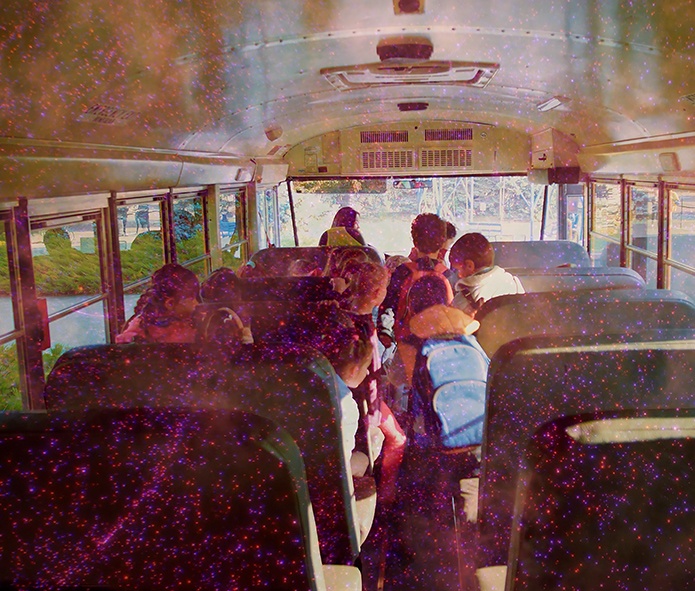
By Richard G Tackett
In March 2020, when the nation braced for the impact of COVID-19, school bus ridership plummeted as parents became fearful of contagion and public viral spread. Almost immediately after lockdowns began, the United Safety & Survivability Corporation began exploring technologies which could help combat the ridership losses and restore public faith in yellow-bus pupil transportation.
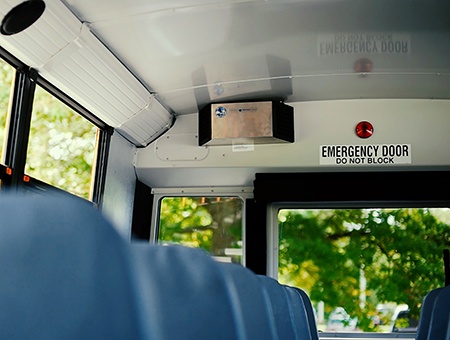 “Our primary mission is safety – the word is in our name, after all,” said Ken Hedgecock, national sales manager at United Safety. “Safety is integral to who we are. When the pandemic started to rage across the country, we started looking at several different technologies that would provide confidence for students and adults to return to their chosen mode of transportation safely.”
“Our primary mission is safety – the word is in our name, after all,” said Ken Hedgecock, national sales manager at United Safety. “Safety is integral to who we are. When the pandemic started to rage across the country, we started looking at several different technologies that would provide confidence for students and adults to return to their chosen mode of transportation safely.”
Jeff Krueger, vice president of field operations, said that United Safety started the research process with a “clean slate,” in that the company did not have a pre-selected product in mind. The goal was to enhance onboard safety for school bus riders as effectively as possible. United Safety interviewed approximately 30 companies offering a wide-range of COVID-fighting onboard safety technology with three main criteria:
1. The technology had to be proven effective and in-use.
2. It could not be limited to use in static situations, like nighttime or off-hours cleaning.
3. The technology had to translate across multiple markets cost-effectively – including school buses and vehicles, public transit, and emergency first-response.
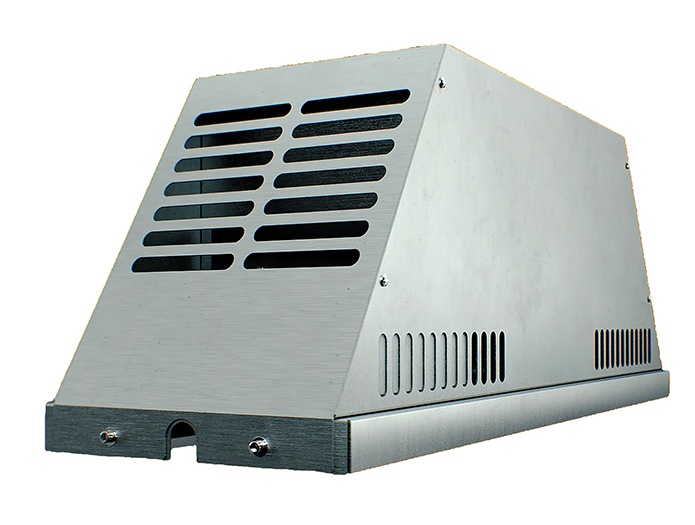 Photohydroionization
Photohydroionization
These criteria led United Safety to Active Air Purification, powered by ultraviolet photohydroionization (UV-PHI®) technology provided by RGF® Environmental Group, Inc. RGF is a 35-year-old company which manufactures over 500 environmental products.
The PHI® process creates low-dose hydrogen peroxides which then get dispersed into the air within the bus where they attack and kill airborne pathogens such as the SARS-CoV-2 airborne molecules. the system continuously purifies onboard air so that it “mimics” natural, outdoor air, where transmission of COVID-19 and other viruses is very rare.
“Although it is a new concept for American school transportation, PHI® technology is widely used in government buildings by the FBI, CIA, military facilities around the country, and even in Chipotle locations across the country, to prevent virus and bacterial spread,” said Joseph Mirabile, president and CEO of United Safety. “We re-engineered the technology into our mobile vehicle units to create an environment that would kill 99.9 percent of COVID and other viruses and bacteria, providing a much cleaner and sterile space for our ridership.”
The Active Air Purification system produces levels of hydrogen peroxide that are only 2 percent of OSHA’s recommended maximums for contained environments. Furthermore, the system is safe for the materials of a bus’s interior.
“The system continually sanitizes the interior of a bus,” Hedgecock said. “And it is not just tested and proven to eliminate COVID-19; it will eliminate other viruses like the H1N1 flu; rhinoviruses that cause colds; and bacterial pathogens that cause mold. It will significantly enhance the cleanliness of the interior of a school bus.”
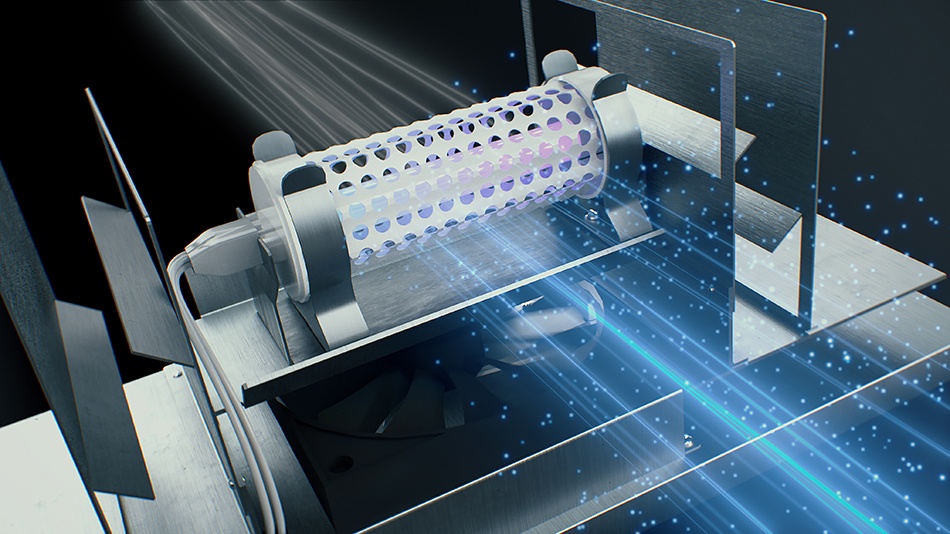
Bringing a proven technology to student transportation
Krueger said that United Safety was motivated to bring PHI® to pupil transportation for a few reasons. The first and most obvious reason is it is a safety-driven company – but, deeper than that, he said that the United Safety team was motivated to address COVID-19 safety on school buses because of the great risks which the pandemic placed on children, educators, school staff, and bus drivers.
“We do not believe that air quality on school buses is a short-term issue,” Krueger said. “Even when we develop an effective COVID-19 vaccine, the desire for our children to have clean air is not going away.”
Hedgecock and Krueger added that, because funding remains one of the biggest challenges in pupil transportation, cost-effectiveness is a key element to the system’s success. The system is a one-time investment, allowing for schools to save on human resources (for multiple per-day cleanings) and cleaning equipment.
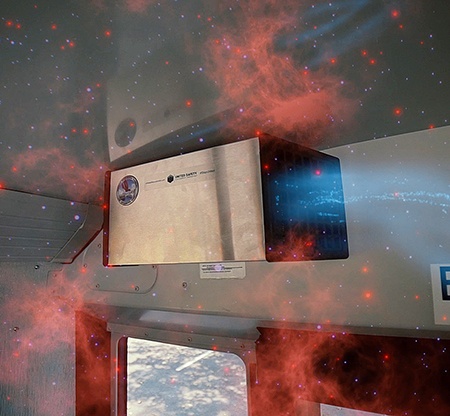 Acquisition costs are neutral with competing disinfection technologies, but the effectiveness of Active Air Purification becomes clear when compared to the costly, lengthy process of deep-clean disinfecting vehicles each night.
Acquisition costs are neutral with competing disinfection technologies, but the effectiveness of Active Air Purification becomes clear when compared to the costly, lengthy process of deep-clean disinfecting vehicles each night.
“Daily COVID cleaning not only requires extraordinary time and labor, but the cleaning chemicals themselves can have a significant negative effect on vehicles,” Mirabile said. “We have seen interior materials degrading on buses exposed to heavy-duty cleaners, which can have long-term impacts on vehicle maintenance.”
United Safety recommends that schools combine the Active Air Purification system with AEGIS® Microbe Shield, an antimicrobial surface treatment; but Mirabile said that schools using Active Air Purification alone will still achieve significantly less material degradation than heavy-duty chemical cleaning.
In onboard test environments, the system is maintaining bacteria levels equivalent to hospitals and food processing centers – even without daily disinfection. This is a result of the system’s ability to engineer outdoor air quality indoors.
“Schools can can move back toward a more normal vehicle cleaning cycles and routines, and let the system do the rest,” Hedgecock said. “This technology will allow us to focus on the task which every person in pupil transportation holds dear: ensuring kids get to school and get home safely.”
The only required system maintenance is an annual cell replacement (the cell consists of the UV bulb and the catalyst agent) which takes approximately 30 minutes.
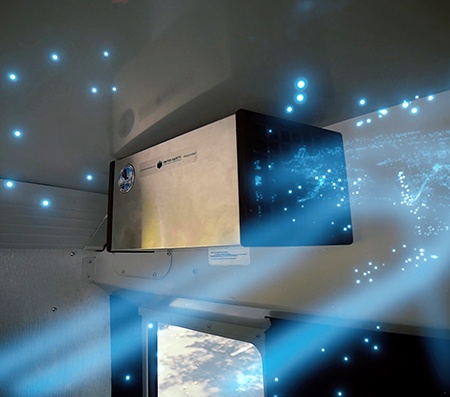 Facing the industry’s challenge
Facing the industry’s challenge
Hedgecock noted that pupil transportation providers are currently searching for ways to restore confidence in student safety aboard school buses and struggling with uncertainties in scheduling.
“There are many different types of school schedules in place right now across America – days on, days off, remote learning, and other variances,” he said. “School districts are scrambling to keep their arms around student safety, modified schedules, as well as daily cleaning. They need a solution which can help ease that load.”
At press time United Safety has deployed thousands of Active Air Purification units into transportation service, with ten times that number in the installation process. Mirabile said that the biggest challenge now is maintaining speed of deployment.
“We think that this is a game changer for the pandemic environment onboard school buses and will help to keep children healthy and in school,” he said. “Millions of buildings in America have been using this technology for decades, and now it is our job to deploy it as quickly and meaningfully as possible aboard vehicles. If PHI® technology had been deployed on pre-pandemic transportation, we would have had a much better chance at stopping the spread in public environments.”ever faced in pupil transportation. With so many children in this nation dependent on school buses to transport them to and from school, it is vital that parents have faith and trust in school bus safety, Hedgecock added.
“This technology is critical to reestablishing the assurance and confidence for which our industry has worked so many decades,” he said. “We’ve earned that trust, but now we’re fighting a challenge that requires a different way of thinking and operating. PHI® technology, or Active Air Purification, can restore that confidence.”


